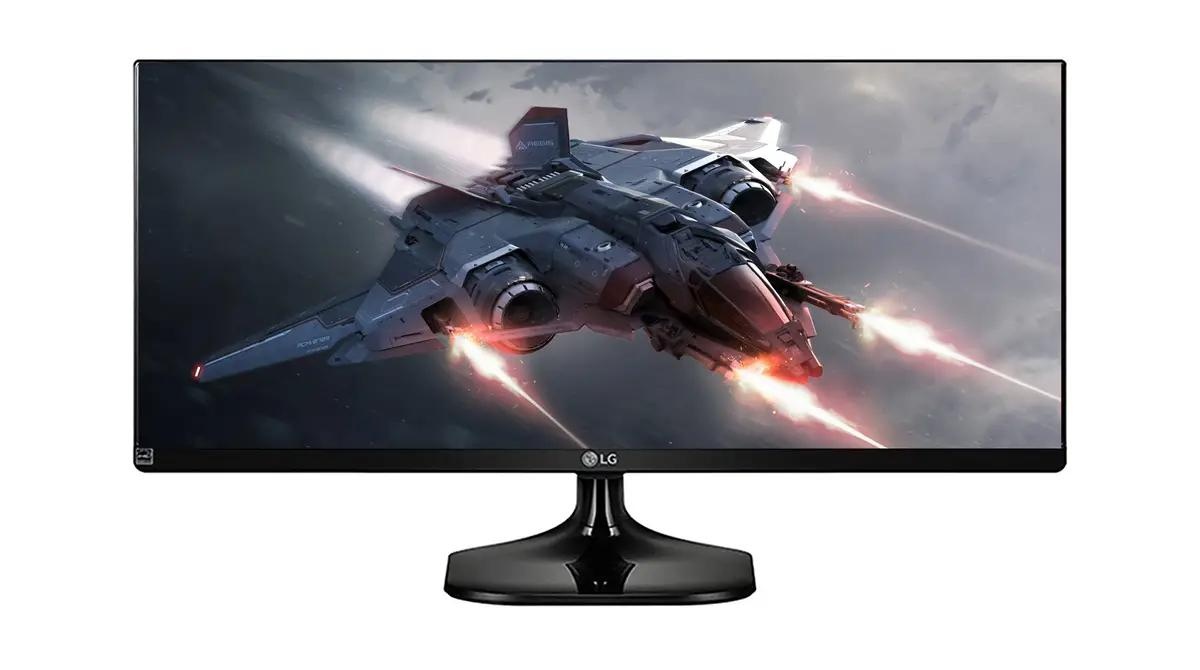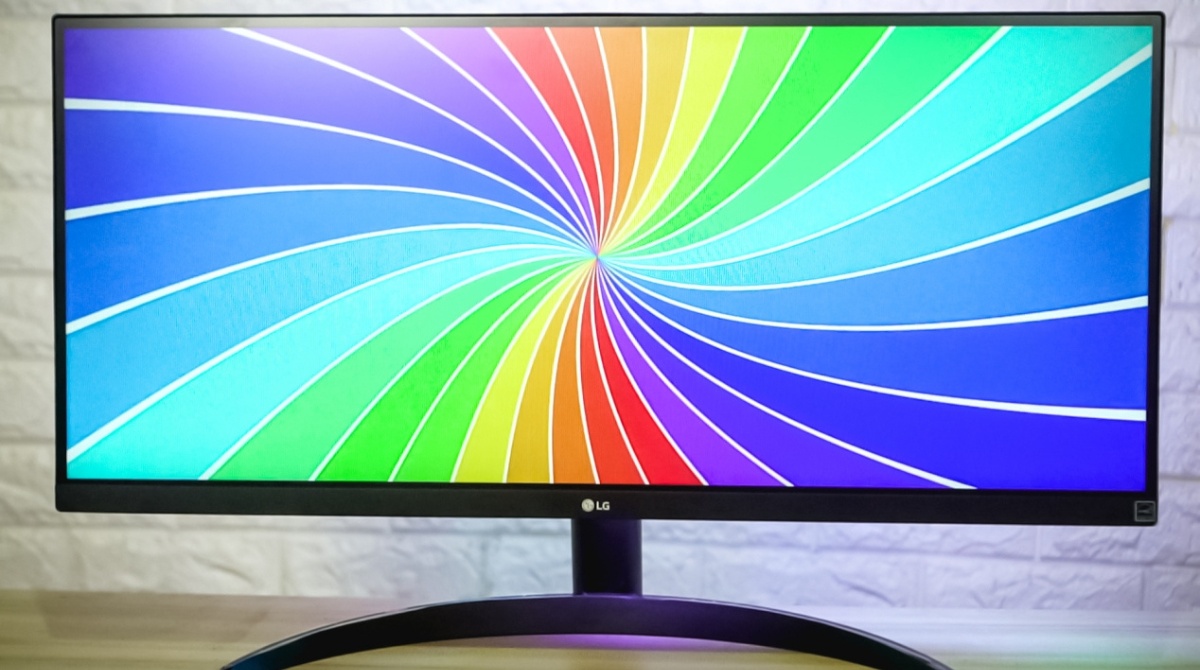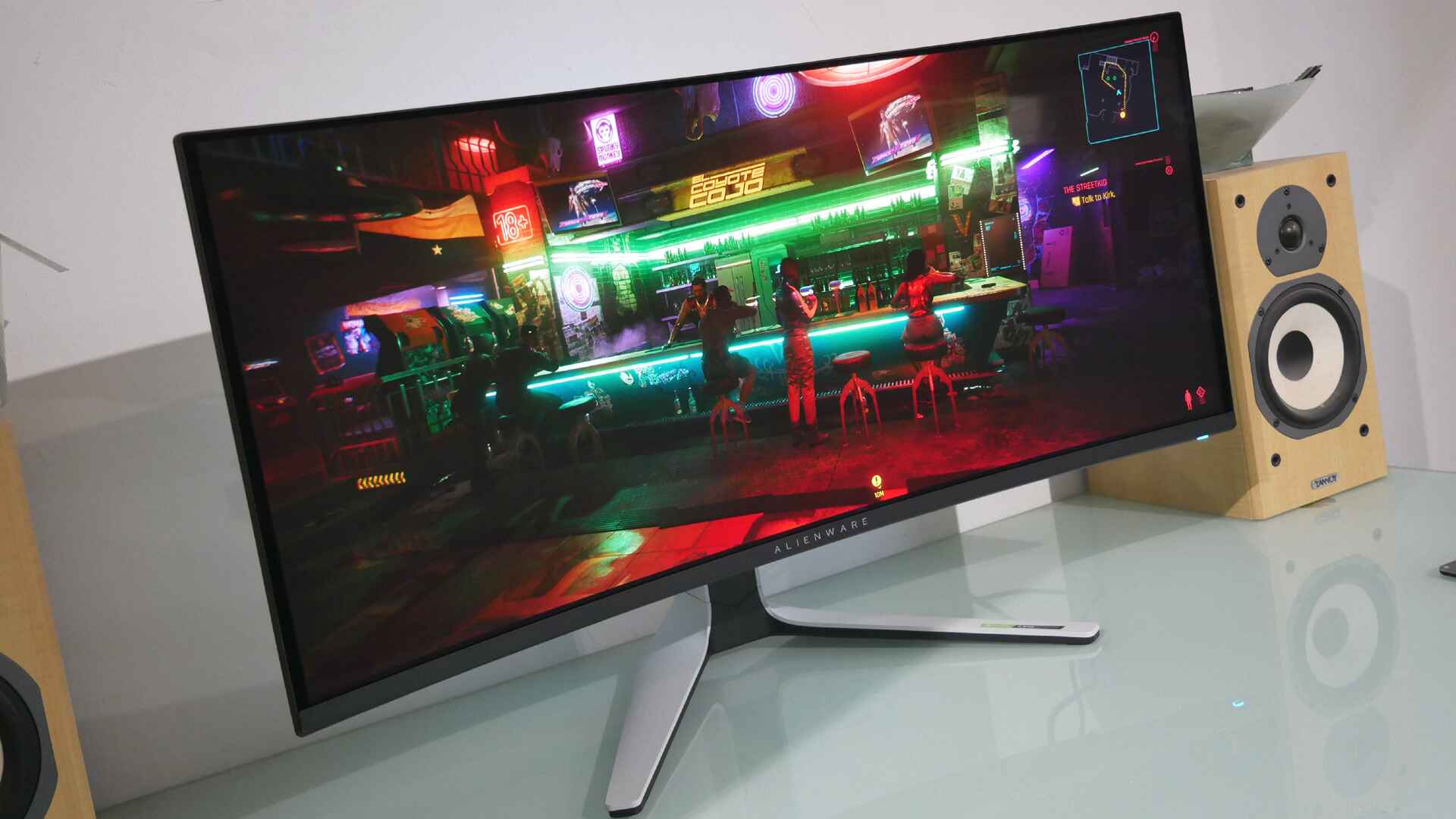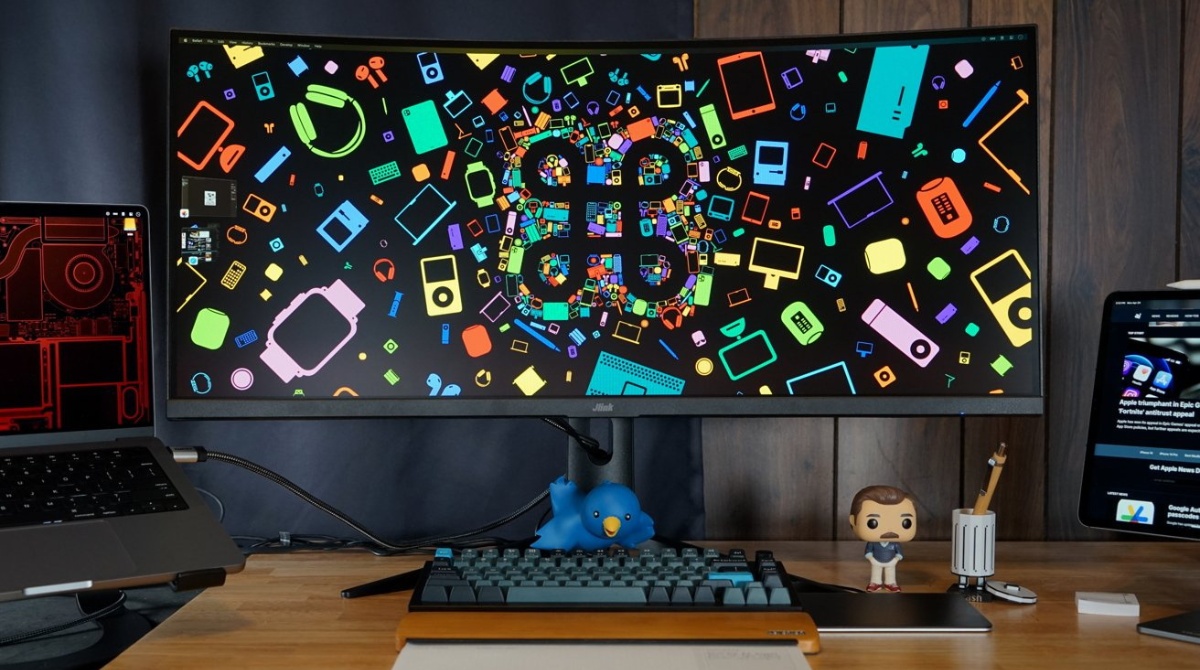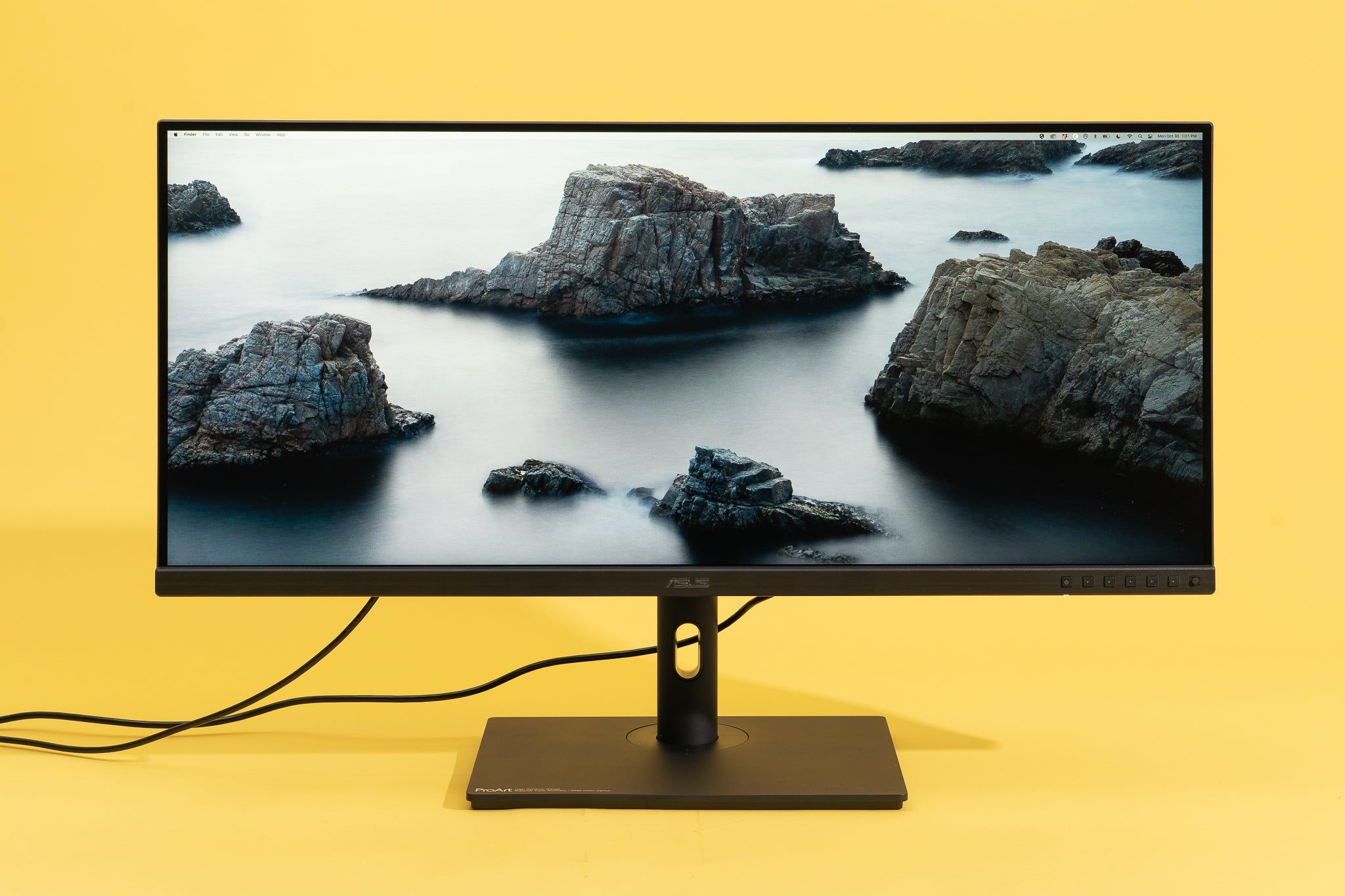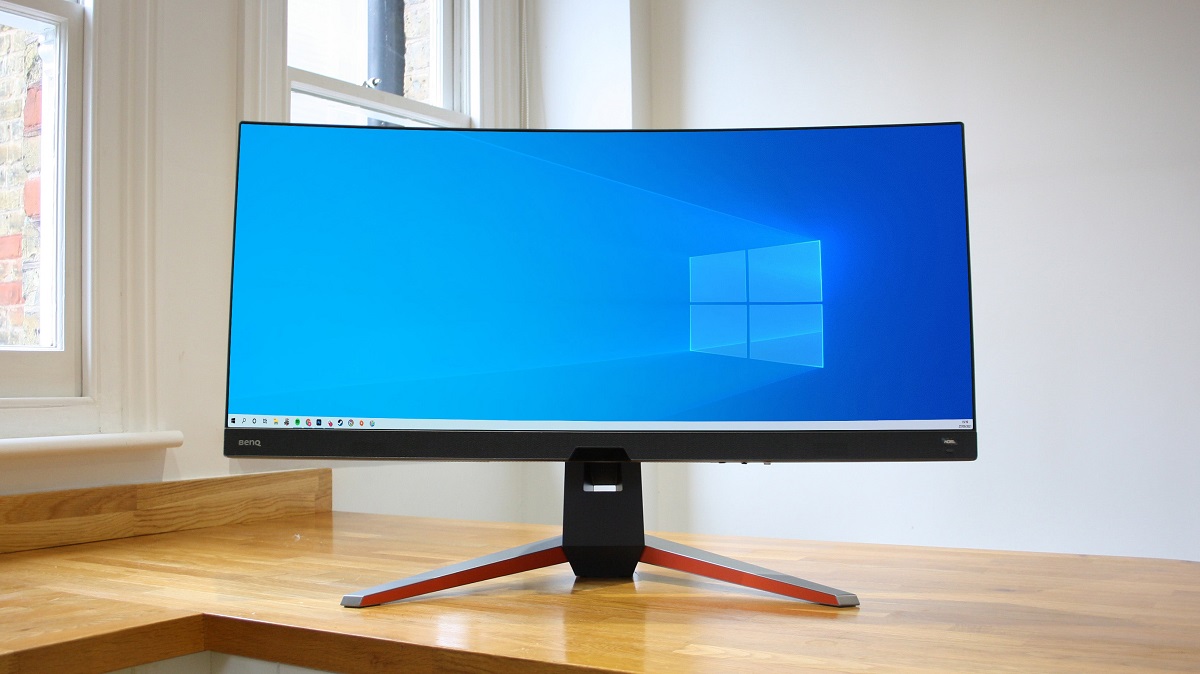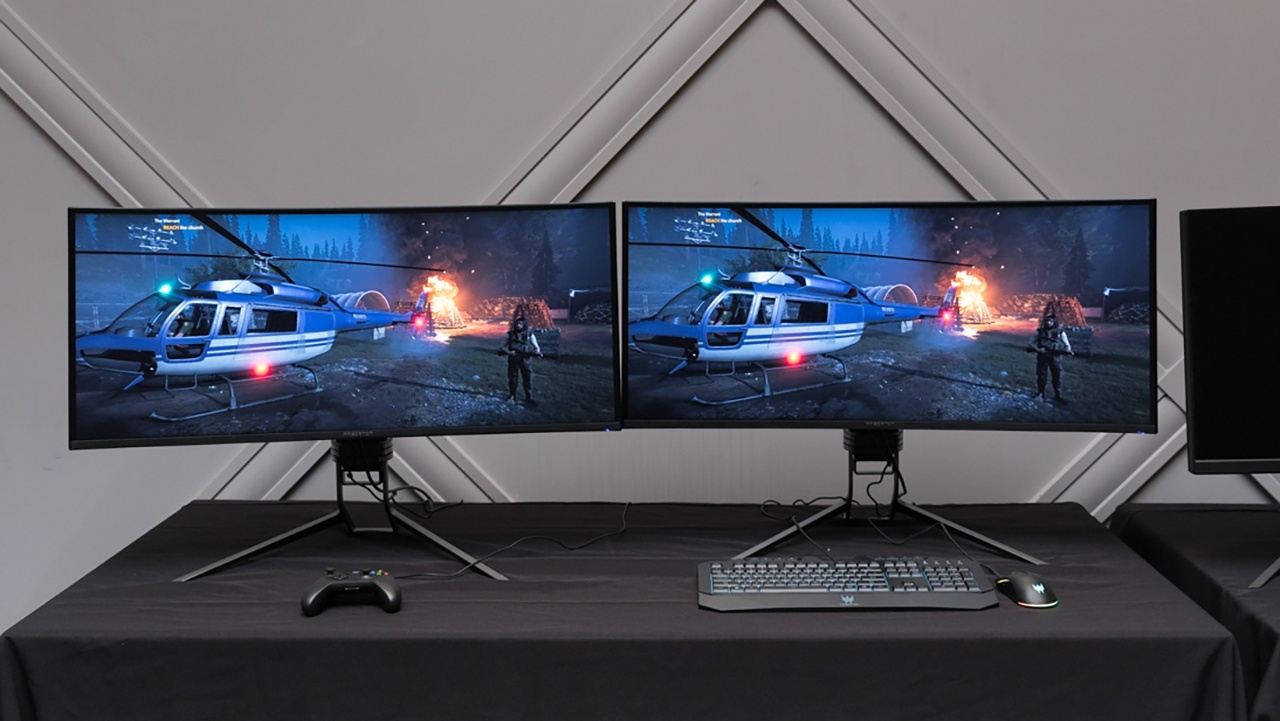Introduction
Technology has come a long way when it comes to computer displays. Gone are the days of bulky CRT monitors and limited screen real estate. Enter the era of ultrawide monitors, where panoramic views and immersive experiences take center stage.
An ultrawide monitor is a display that offers an expanded aspect ratio, providing a wider field of view compared to traditional monitors. It allows users to have more screen space for productivity, gaming, and multimedia purposes. With its impressive width and immersive features, ultrawide monitors have become increasingly popular among professionals and gamers alike.
Unlike standard monitors that typically have a 16:9 aspect ratio, ultrawide monitors have an aspect ratio of 21:9 or even wider. This wider aspect ratio creates a wider horizontal display, making it ideal for multitasking, content creation, and gaming enthusiasts who crave a more immersive experience.
Ultrawide monitors come in various sizes, with diagonal measurements ranging from 29 inches to a whopping 49 inches and beyond. These displays offer more pixels and extended screen space, allowing for increased productivity and enhanced visual experiences.
While ultrawide monitors undoubtedly provide a multitude of benefits, choosing the right one can be a bit overwhelming. Factors such as display size, resolution, connectivity options, and ergonomic features must be considered to ensure the perfect fit for individual needs. Knowing how and where to use an ultrawide monitor will also play a significant role in determining whether it’s the right choice for you.
In this article, we will explore the world of ultrawide monitors, discussing their benefits, common sizes, and considerations when choosing one. We will also delve into various applications and scenarios where ultrawide monitors truly shine. So, buckle up and get ready to dive into the world of ultrawide monitors!
What is an Ultrawide Monitor?
An ultrawide monitor is a type of computer display that offers a wider aspect ratio than traditional monitors. While standard monitors typically have a 16:9 aspect ratio, ultrawide monitors have an aspect ratio of 21:9 or even wider, resulting in a more expansive screen space.
The increased width of ultrawide monitors allows for a more immersive viewing experience, providing users with a wider field of view. This can be especially beneficial for tasks that require multitasking or working with multiple windows simultaneously.
One of the defining features of an ultrawide monitor is its ability to provide more horizontal screen space. This additional real estate allows for better organization and increased productivity. With an ultrawide monitor, you can have multiple windows open side by side, eliminating the need to constantly switch between applications.
Ultrawide monitors are not limited to just work-related tasks. Their wider aspect ratio also makes them an excellent choice for gamers and multimedia enthusiasts. The expanded screen space creates a more immersive gaming experience, allowing gamers to see more of the game world without the distractions of bezels in between.
In addition to the wider aspect ratio, ultrawide monitors often have high resolutions, such as 3440×1440 or even 5120×1440. These resolutions offer sharp and detailed visuals, transforming the way you interact with digital content.
It’s worth noting that not all ultrawide monitors are created equal. Some models may have a curved screen, which further enhances immersion by wrapping the display around your field of vision. Curved ultrawide monitors provide a more natural viewing experience, as they mimic the curvature of the human eye.
Overall, ultrawide monitors provide a unique and versatile display option for various use cases. Whether you’re a professional looking for enhanced productivity, a gamer seeking a more immersive gaming experience, or a media enthusiast craving a cinematic feel, an ultrawide monitor can elevate your computing experience to new heights.
Display Size and Aspect Ratio
When it comes to ultrawide monitors, display size and aspect ratio are crucial factors to consider. The display size refers to the diagonal measurement of the screen, usually measured in inches, while the aspect ratio determines the width-to-height ratio of the display.
Ultrawide monitors typically have an aspect ratio of 21:9, which means that for every 21 units of width, there are 9 units of height. This wider aspect ratio provides a more cinematic viewing experience and a larger horizontal viewing area compared to standard 16:9 monitors.
When choosing an ultrawide monitor, it’s essential to consider your personal preferences and the intended use. A smaller ultrawide monitor, such as a 29 or 34-inch model, may be suitable for general productivity tasks, while a larger display, such as a 38 or 49-inch monitor, can offer an even more immersive experience.
It’s worth noting that the physical size of the display can impact the overall dimensions of the monitor. As ultrawide monitors have a wider aspect ratio, they may appear wider than standard monitors of the same diagonal size.
Another factor to consider is the resolution of the ultrawide monitor. Higher resolution displays offer sharper and more detailed visuals, but they also require more graphics processing power. Common resolutions for ultrawide monitors include 2560×1080, 3440×1440, and even 5120×1440. The higher the resolution, the more pixels are packed into the display, resulting in crisper images and more screen real estate.
It’s important to strike a balance between display size, resolution, and your computer system’s capabilities. A larger screen with a higher resolution may provide a more immersive experience, but it may require a more powerful computer to drive the display effectively.
Ultimately, the choice of display size and aspect ratio depends on your personal preferences, intended use, and the available space for your monitor setup. Whether you opt for a smaller ultrawide monitor for everyday tasks or a larger, more expansive display for gaming and multimedia purposes, the size and aspect ratio of an ultrawide monitor can greatly enhance your computing experience.
Common Ultrawide Monitor Sizes
Ultrawide monitors come in a range of sizes to cater to various user preferences and requirements. These monitors offer larger screen space and wider aspect ratios, providing an immersive viewing experience and enhanced productivity. Here are some common ultrawide monitor sizes:
- 29 inches: This is a popular entry-level size for ultrawide monitors. It offers a good balance of screen real estate and affordability. A 29-inch ultrawide monitor provides a wider display compared to a standard monitor, allowing for improved multitasking and better organization of windows.
- 34 inches: A 34-inch ultrawide monitor is a popular choice for those looking for a larger display without sacrificing desk space. It provides a spacious viewing area and an immersive experience while being manageable in terms of physical size. This size is suitable for both work and entertainment purposes.
- 38 inches: If you desire an even larger display, a 38-inch ultrawide monitor offers an expansive viewing experience. The increased screen real estate allows for even more multitasking capabilities and enhanced immersion for gaming and multimedia content. However, it’s important to ensure that you have enough desk space to accommodate this size.
- 49 inches and above: For those who crave the ultimate ultrawide experience, there are ultrawide monitors that exceed 49 inches in size. These massive displays offer an unparalleled level of immersion and an expansive canvas for productivity and entertainment. They are particularly popular among gamers and content creators who require a large viewing area.
It’s important to consider your workspace and the available desk space when choosing an ultrawide monitor size. While larger monitors provide more screen real estate, they may require a wider desk or a mounting solution to accommodate them comfortably.
Additionally, the screen resolution should be taken into account alongside the size. Higher resolutions, such as 3440×1440 or 5120×1440, are common in larger ultrawide monitors. These resolutions ensure sharp and detailed visuals, further enhancing the overall viewing experience.
Ultimately, the choice of an ultrawide monitor size depends on your personal preference, the tasks you perform, and the space available in your setup. Whether you opt for a compact 29-inch model or a massive 49-inch display, an ultrawide monitor can revolutionize your computing experience by providing an expansive, panoramic view.
Benefits of Using an Ultrawide Monitor
Ultrawide monitors offer a wide range of benefits that contribute to an improved computing experience. These unique displays provide users with a multitude of advantages, whether it’s for work, gaming, or multimedia purposes. Let’s explore the benefits of using an ultrawide monitor:
- Enhanced Productivity: One of the primary advantages of an ultrawide monitor is the increase in screen real estate. The wider aspect ratio allows for more windows and applications to be visible side by side, making multitasking and workflow management more efficient. With an ultrawide monitor, you can have multiple documents, spreadsheets, and web pages open simultaneously, eliminating the need to constantly switch between them. This increased productivity translates to time saved and improved efficiency.
- Immersive Gaming Experience: Gamers can greatly benefit from the immersive experience that an ultrawide monitor provides. The wider field of view allows gamers to see more of the game environment, enhancing situational awareness and immersion. With the extended horizontal screen space, games can be displayed more expansively, making for a more captivating and engrossing gaming session. Many modern games also support ultrawide resolutions natively, further enhancing the visual experience.
- Cinematic Multimedia Viewing: Ultrawide monitors excel at displaying multimedia content, delivering a cinematic experience right at your desk. Whether you’re watching movies, TV shows, or online videos, the wider aspect ratio expands the viewing area, creating a more immersive and captivating experience. You can enjoy a truly cinematic feel with reduced black bars and more detailed visuals, enhancing your enjoyment of multimedia content.
- Improved Video and Photo Editing: The additional screen space on an ultrawide monitor is a boon for professionals working in video editing, graphic design, and photography. The wider aspect ratio allows for a more comprehensive view of the timeline, editing tools, and content being worked on. This increased workspace enables more precise and efficient editing, reducing the need for zooming in and out constantly. The added screen real estate also provides a better context for working with multiple tracks or layers.
- Reduced Eyestrain: Ultrawide monitors often come with curved screens, which can provide a more ergonomic viewing experience. The gentle curvature matches the natural curvature of the eyes, reducing eye strain and providing a more comfortable viewing angle. Additionally, the larger screen space allows for better organization and easier readability, reducing the need to squint or strain to read small text or details.
These are just a few of the numerous benefits that ultrawide monitors offer. Their wider aspect ratio, increased screen real estate, and immersive qualities elevate the computing experience to new heights, improving productivity, enhancing entertainment, and providing a more comfortable viewing experience.
Considerations When Choosing an Ultrawide Monitor
Choosing the right ultrawide monitor can be a daunting task, given the wide range of options available in the market. To ensure that you make the best decision for your needs, it’s important to consider several factors. Here are some key considerations when choosing an ultrawide monitor:
- Display Size and Resolution: Determine the ideal display size and resolution based on your workspace and intended use. Smaller ultrawide monitors may be more suitable for general productivity tasks, while larger displays offer a more immersive experience for gaming and multimedia. Higher resolutions provide sharper and more detailed visuals.
- Connectivity Options: Consider the connectivity options available on the monitor. Ensure that it has the necessary ports, such as HDMI, DisplayPort, and USB, to connect your devices. It’s also worth checking if the monitor supports features like USB-C or Thunderbolt for easier connectivity and data transfer.
- Ergonomic Features: Look for ergonomic features that enhance comfort and adjustability. Features like height adjustment, tilt, and swivel can help optimize your viewing experience and reduce strain on your neck and eyes. A curved ultrawide monitor can also provide a more immersive viewing experience and a more natural field of vision.
- Color Accuracy and Calibration: If you work with color-sensitive tasks such as graphic design or photo editing, consider a monitor with accurate color reproduction. Look for monitors with high color gamut coverage, color calibration capabilities, and support for color profiles like sRGB or Adobe RGB.
- Gaming-specific Features: For gamers, consider monitors with features like high refresh rates, low response times, and support for adaptive sync technologies like AMD FreeSync or NVIDIA G-Sync. These features can provide smoother gameplay and eliminate screen tearing and stuttering.
- Budget: Set a budget that aligns with your requirements and prioritize features accordingly. While higher-end models may offer more advanced features, there are also more affordable options available that provide a good balance between performance and value.
By considering these factors, you can narrow down your choices and find the ultrawide monitor that best suits your needs. It’s important to strike a balance between the features you require and your budget, ensuring that you get the most value out of your investment.
Applications and Scenarios Where Ultrawide Monitors Excel
Ultrawide monitors are versatile displays that excel in various applications and scenarios, enhancing productivity, immersive experiences, and visual enjoyment. Here are some areas where ultrawide monitors truly shine:
- Productivity and Multitasking: Ultrawide monitors are perfect for boosting productivity by providing ample screen space for multitasking. Professionals who work with multiple applications simultaneously, such as content creators, designers, and developers, can benefit greatly from the extended horizontal real estate. The ability to have multiple windows open side by side streamlines workflows and eliminates the need for frequent resizing and switching between applications.
- Gaming and Immersive Entertainment: Gamers are among the primary beneficiaries of ultrawide monitors. The wider aspect ratio creates a more immersive gaming experience by expanding the field of view and reducing visual distractions. Racing and flight simulator games, for example, benefit greatly from the panoramic view afforded by an ultrawide monitor, providing a more realistic and engaging simulation. Additionally, ultrawide monitors enhance the enjoyment of watching movies, TV shows, and streaming content, offering a more cinematic display.
- Video and Photo Editing: Ultrawide monitors provide a significant advantage to professionals in the fields of video and photo editing. The wider screen space allows for a more comprehensive view of the timeline, toolbars, and content being edited. With more room for multiple panels and tool windows, editors can fine-tune their work with precision and efficiency. The expanded horizontal workspace also facilitates working with timelines, comparing shots, and organizing clips, making the editing process smoother and more streamlined.
- Data Analysis and Financial Trading: Professionals involved in data analysis, financial trading, and stock market monitoring can greatly benefit from ultrawide monitors. The wider aspect ratio allows for more data and charts to be displayed simultaneously, enabling a more comprehensive and detailed analysis. Traders can monitor multiple stocks, markets, and financial news in real-time, improving decision-making and reducing the need for constantly switching between different applications or monitors.
- Simulations and Virtual Reality (VR): Ultrawide monitors are also valuable in simulations and virtual reality (VR) applications. The wider field of view contributes to a more immersive and realistic experience, especially when combined with VR headsets. Applications such as flight simulators, architectural walkthroughs, and virtual tours can benefit from the extended screen space, providing users with a more encompassing virtual environment and enhancing the overall sense of presence.
These are just a few examples of the applications and scenarios where ultrawide monitors truly excel. Their wider aspect ratio and increased screen real estate provide users with enhanced productivity, immersive gaming experiences, and improved visual enjoyment across various fields and activities.
Conclusion
Ultrawide monitors have revolutionized the way we work, play, and consume media. With their wider aspect ratios and increased screen real estate, these displays offer numerous benefits that enhance productivity, immersion, and visual enjoyment.
When considering an ultrawide monitor, it’s important to evaluate factors such as display size, resolution, connectivity options, ergonomic features, and budget. Choosing the right combination of these factors will ensure that you find an ultrawide monitor that meets your specific needs and preferences.
Ultrawide monitors find their place in a variety of applications and scenarios. They excel in productivity tasks by providing ample screen space for multitasking and workflow management. Gamers and multimedia enthusiasts can enjoy a more immersive experience with enhanced visuals and a wider field of view. Professionals in video and photo editing can benefit from the extended workspace for precise editing and better organization. Data analysts and financial traders can monitor and analyze data more efficiently. Simulations and VR experiences are also elevated thanks to the wider aspect ratio.
In conclusion, ultrawide monitors offer a compelling display option for those seeking enhanced productivity, immersive gaming experiences, and captivating multimedia enjoyment. With their broader aspect ratios, extended screen space, and ergonomic features, these monitors elevate the computing experience and unleash the full potential of your digital activities.









